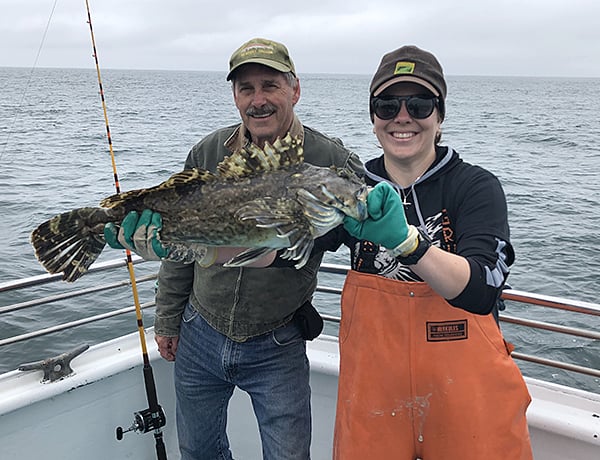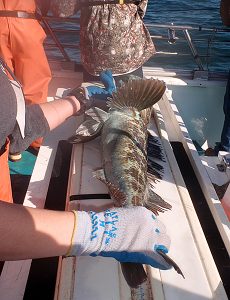(March 17, 2023-Newport, Ore.) – Oregon’s Marine Reserves Program plans to return to the ports of Garibaldi and Port Orford this spring and fall in the latest installment of this unique way for coastal commercial and recreational fishers to help fuel scientific research in the state’s near-shore waters.
The Marine Preserves Program, administered by the Oregon Department of Fish and Wildlife, plans to target the Redfish Rocks Marine Reserve near Port Orford and the Cape Falcon Marine Reserve near Garibaldi during this year’s hook-and-line surveys.
During the surveys, private commercial boats – usually charters – contract with the agency to take out volunteer anglers who catch rockfish in key underwater reefs. They focus within marine reserves where all other fishing is banned as well as comparison areas outside of them. Biologists on board identify and measure the fish before they are quickly and safely released.
When compared to data from nearly identical fishing efforts dating back as far as 2010, marine scientists are able to track changes in catch rates, species caught and their sizes from before and after marine-reserve protections went into place.
This growing data set not only will help reveal changes to marine life within reserve areas but also create more clarity to the murky world of Oregon’s near-shore reefs.
“It’s our most powerful tool for tracking fish,” says Stephanie Fields, the program’s interim ecological project leader. “We consistently get out on the water to get the fish in hand, gathering information on species ID and size.”
The hook-and-line surveys are one of four key ways fish are surveyed in the reserves and outside monitoring areas. The others are visual surveys, such as trained volunteer SCUBA divers and other contracted commercial boats from which stationary cameras are lowered into the reefs as well as a remote underwater roving video camera.

Last year, hook-and-line surveys were run at the Cascade Head Marine Reserve out of Depoe Bay and Cape Perpetua Marine Reserve out of Newport. The fifth and final Oregon marine reserve at Otter Rock near Newport is not part of the hook-and-line surveys because its waters are deemed too shallow for it.
Since the hook-and-line survey began in 2010, the program has paid $382,619.25 to commercial fishermen under survey contracts.
The Marine Reserves Program also conducts monitoring of the social impacts of all five reserves on coastal communities, and studies have shown wide-ranging support throughout Western Oregon.
Each year, the hook-and-line surveys rely on new volunteer researchers as well as a cadre of regulars, like Don Sarver of Newport. Sarver travels the Oregon coast each summer to jig in the name of science and just plain enjoyment.
“Everybody’s laughing, telling fish stories and just having a great time,” Sarver says.

“It’s a fun fishing trip, but on the other hand, it’s a scientific study,” Sarver says. “And they are comparing this every year to see do we get more, do we get less, do we get more variety and are the fish bigger. So it’s kind of neat to see that.”
This year’s survey effort began Friday when the Marine Reserves Program officially asked for bids from commercial captains. The program plans to hire one boat each out of Garibaldi and Port Orford this year.
Bids are due by April 4. For more information on the process bidding requirements on the Redfish Rocks contract, click HERE. For requirements on the Cape Falcon bid, click HERE.
No fishing dates have yet been set, but plans are to run trips of up to 10 anglers each between April and June, then again from mid-August to early October. Ten trips are planned out of Garibaldi and a dozen out of Port Orford.
Potential volunteers, who must have marine fishing experience, should email Ryan.T.Fields@odfw.oregon.gov to apply.
Enacted by the Oregon Legislature in 2009, the Marine Reserves Program includes five actual marine reserves and nine protected areas that together cover nine percent of Oregon’s near-shore ocean waters. The reserves, where no plants or animals can be removed and where development is banned, are underwater listening stations tracking ocean changes including fish, invertebrate and algal communities. It is the first long-term nearshore ocean conservation and monitoring program run by the state of Oregon and includes cutting-edge research on the economic, social and cultural dynamics of the Oregon coast and coastal communities.

